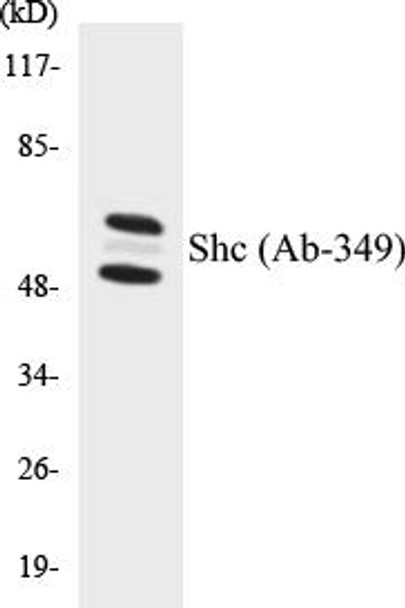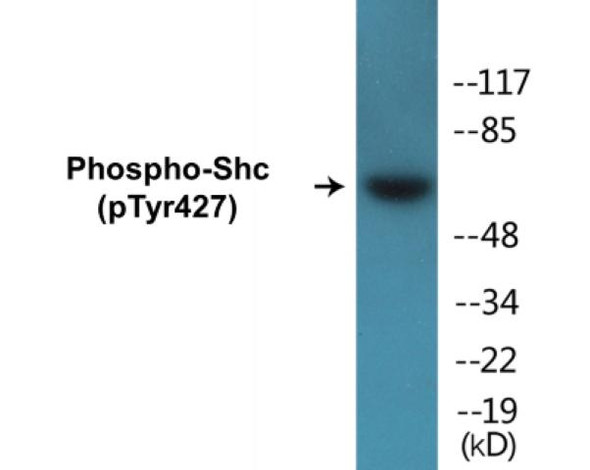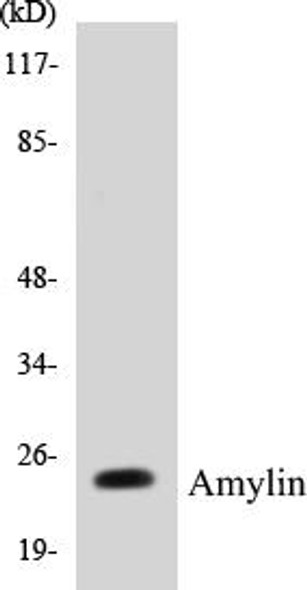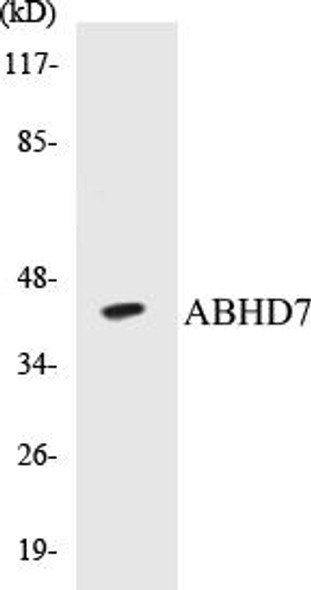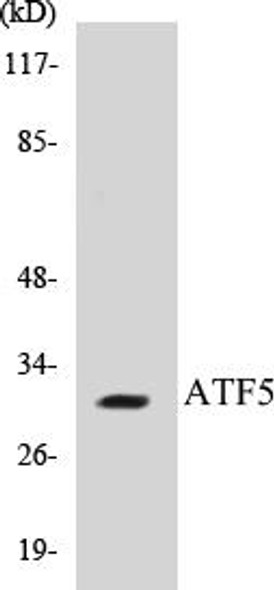Description
Shc Colorimetric Cell-Based ELISA Kit
The SHC Colorimetric Cell-Based ELISA Kit is a groundbreaking tool for detecting and quantifying the levels of SHC proteins in cell-based assays. This kit offers exceptional sensitivity and specificity, allowing researchers to achieve accurate and reproducible results across a variety of experimental conditions.SHC proteins are key regulators of cellular signaling pathways, influencing processes such as cell growth, differentiation, and survival. Dysfunction of SHC proteins has been linked to various diseases, including cancer, diabetes, and autoimmune disorders, highlighting their importance as potential therapeutic targets.
By utilizing the SHC Colorimetric Cell-Based ELISA Kit, researchers can gain valuable insights into the role of SHC proteins in health and disease. This kit represents a valuable asset for studying cellular signaling pathways and developing novel strategies for targeted therapy.
| Product Name: | Shc Colorimetric Cell-Based ELISA Kit |
| Product Code: | CBCAB00359 |
| ELISA Type: | Cell-Based |
| Target: | Shc |
| Reactivity: | Human, Mouse, Rat |
| Dynamic Range: | > 5000 Cells |
| Detection Method: | Colorimetric 450 nmStorage/Stability:4°C/6 Months |
| Format: | 96-Well Microplate |
The Shc Cell-Based ELISA Kit is a convenient, lysate-free, high throughput and sensitive assay kit that can monitor Shc protein expression profile in cells. The kit can be used for measuring the relative amounts of Shc in cultured cells as well as screening for the effects that various treatments, inhibitors (ie. siRNA or chemicals), or activators have on Shc.
Qualitative determination of Shc concentration is achieved by an indirect ELISA format. In essence, Shc is captured by Shc-specific primary antibodies while the HRP-conjugated secondary antibodies bind the Fc region of the primary antibody. Through this binding, the HRP enzyme conjugated to the secondary antibody can catalyze a colorimetric reaction upon substrate addition. Due to the qualitative nature of the Cell-Based ELISA, multiple normalization methods are needed:
| 1. | A monoclonal antibody specific for human GAPDH is included to serve as an internal positive control in normalizing the target absorbance values. |
| 2. | Following the colorimetric measurement of HRP activity via substrate addition, the Crystal Violet whole-cell staining method may be used to determine cell density. After staining, the results can be analysed by normalizing the absorbance values to cell amounts, by which the plating difference can be adjusted. |
| Database Information: | Gene ID: 6464, UniProt ID: P29353, OMIM: 600560, Unigene: Hs.433795 |
| Gene Symbol: | SHC1 |
| Sub Type: | None |
| UniProt Protein Function: | SHC1: an adaptor protein containing a SH2 domain and a PID domain within a PH domain-like fold. Couples activated growth factor receptors to signaling pathways. Participates in a signaling cascade initiated by activated KIT and KITLG/SCF. Six human isoforms are produced by alternative promoter usage and alternative splicing. Isoforms p66, p52 and p46 (P29353-1, -2, and -3), produced by alternative initiation, variously regulate growth factor signaling, oncogenesis, intracellular oxidant levels, and apoptosis. Isoforms p46 and p52, once phosphorylated, couple activated receptor tyrosine kinases to Ras via the recruitment of the GRB2/SOS complex, thus initiating the cytoplasmic proliferative Ras signaling cascade in various non-neuronal systems. Isoform p66 does not mediate Ras activation, but associates with mitochondria where it controls intracellular redox status, mitochondrial permeability, life span, and stress-induced apoptosis. p66 acts as a downstream target of the tumor suppressor p53 and is required for the ability of stress-activated p53 to induce elevation of intracellular oxidants, cytochrome c release and apoptosis. P66 deletion in mice decreases the incidence of aging-associated diseases, such as atherosclerosis, and significantly prolongs life span. Participates in signaling downstream of TIE2, the tyrosine kinase receptor for angiopoietin, and plays a role in the regulation of endothelial cell migration and sprouting angiogenesis. Interacts with tyrosine-phosphorylated CD3T, DDR2, LRP1, IRS4, SHP, FLT4, PDGFRB, TIE2, TrkA, -B and -C. Interacts with the NPXY motif of tyrosine-phosphorylated IGF1R and INSR in vitro via the PID domain. p66Shc is known to be activated by the mutant SOD1 associated with familial forms of amyotrophic lateral sclerosis (ALS), causing a decrease in the activity of Rac1 through a redox-sensitive regulation. In case of oxidative conditions, phosphorylation at S36 of isoform p66Shc, leads to mitochondrial accumulation p66 plays a role in mediating mitophagy and determining neuronal cell fate following acute oxygen glucose deprivation. Isoform p46 is localized to the mitochondria matrix. Targeting of isoform p46Shc to mitochondria is mediated by its first 32 amino acids, which behave as a bona fide mitochondrial targeting sequence. Isoform p52Shc and isoform p66Shc, that contain the same sequence but more internally located, display a different subcellular localization. |
| UniProt Protein Details: | Protein type:Adaptor/scaffold; Apoptosis; Motility/polarity/chemotaxis; Mitochondrial Chromosomal Location of Human Ortholog: 1q21 Cellular Component: mitochondrial matrix; plasma membrane; cytosol Molecular Function:insulin-like growth factor receptor binding; protein binding; ephrin receptor binding; protein-tyrosine kinase activity; neurotrophin TRKA receptor binding; phospholipid binding; protein kinase binding; transmembrane receptor protein tyrosine kinase adaptor protein activity; insulin receptor binding; epidermal growth factor receptor binding Biological Process: epidermal growth factor receptor signaling pathway; platelet activation; fibroblast growth factor receptor signaling pathway; peptidyl-tyrosine phosphorylation; nerve growth factor receptor signaling pathway; unfolded protein response; activation of MAPK activity; heart development; regulation of epidermal growth factor receptor activity; MAPKKK cascade; cell-cell adhesion; cellular protein metabolic process; unfolded protein response, activation of signaling protein activity; regulation of growth; actin cytoskeleton reorganization; positive regulation of cell proliferation; Ras protein signal transduction; insulin receptor signaling pathway; innate immune response; angiogenesis; blood coagulation; leukocyte migration; positive regulation of DNA replication |
| NCBI Summary: | This gene encodes three main isoforms that differ in activities and subcellular location. While all three are adapter proteins in signal transduction pathways, the longest (p66Shc) may be involved in regulating life span and the effects of reactive oxygen species. The other two isoforms, p52Shc and p46Shc, link activated receptor tyrosine kinases to the Ras pathway by recruitment of the GRB2/SOS complex. p66Shc is not involved in Ras activation. Unlike the other two isoforms, p46Shc is targeted to the mitochondrial matrix. Several transcript variants encoding different isoforms have been found for this gene. [provided by RefSeq, Feb 2011] |
| UniProt Code: | P29353 |
| NCBI GenInfo Identifier: | 182676455 |
| NCBI Gene ID: | 6464 |
| NCBI Accession: | P29353.4 |
| UniProt Secondary Accession: | P29353,O15290, Q5T180, Q5T183, Q5T184, Q5T185, Q5T186 Q8N4K5, Q96CL1, B5BU19, D3DV78, |
| UniProt Related Accession: | P29353 |
| Molecular Weight: | 583 |
| NCBI Full Name: | SHC-transforming protein 1 |
| NCBI Synonym Full Names: | SHC (Src homology 2 domain containing) transforming protein 1 |
| NCBI Official Symbol: | SHC1 |
| NCBI Official Synonym Symbols: | SHC; SHCA |
| NCBI Protein Information: | SHC-transforming protein 1; SH2 domain protein C1; SHC-transforming protein 3; SHC-transforming protein A; SHC (Src homology 2 domain-containing) transforming protein 1 |
| UniProt Protein Name: | SHC-transforming protein 1 |
| UniProt Synonym Protein Names: | SHC-transforming protein 3; SHC-transforming protein A; Src homology 2 domain-containing-transforming protein C1; SH2 domain protein C1 |
| Protein Family: | SHC-transforming protein |
| UniProt Gene Name: | SHC1 |
| UniProt Entry Name: | SHC1_HUMAN |
| Component | Quantity |
| 96-Well Cell Culture Clear-Bottom Microplate | 2 plates |
| 10X TBS | 24 mL |
| Quenching Buffer | 24 mL |
| Blocking Buffer | 50 mL |
| 15X Wash Buffer | 50 mL |
| Primary Antibody Diluent | 12 mL |
| 100x Anti-Phospho Target Antibody | 60 µL |
| 100x Anti-Target Antibody | 60 µL |
| Anti-GAPDH Antibody | 60 µL |
| HRP-Conjugated Anti-Rabbit IgG Antibody | 12 mL |
| HRP-Conjugated Anti-Mouse IgG Antibody | 12 mL |
| SDS Solution | 12 mL |
| Stop Solution | 24 mL |
| Ready-to-Use Substrate | 12 mL |
| Crystal Violet Solution | 12 mL |
| Adhesive Plate Seals | 2 seals |
The following materials and/or equipment are NOT provided in this kit but are necessary to successfully conduct the experiment:
- Microplate reader able to measure absorbance at 450 nm and/or 595 nm for Crystal Violet Cell Staining (Optional)
- Micropipettes with capability of measuring volumes ranging from 1 µL to 1 ml
- 37% formaldehyde (Sigma Cat# F-8775) or formaldehyde from other sources
- Squirt bottle, manifold dispenser, multichannel pipette reservoir or automated microplate washer
- Graph paper or computer software capable of generating or displaying logarithmic functions
- Absorbent papers or vacuum aspirator
- Test tubes or microfuge tubes capable of storing ≥1 ml
- Poly-L-Lysine (Sigma Cat# P4832 for suspension cells)
- Orbital shaker (optional)
- Deionized or sterile water
*Note: Protocols are specific to each batch/lot. For the correct instructions please follow the protocol included in your kit.
| Step | Procedure |
| 1. | Seed 200 µL of 20,000 adherent cells in culture medium in each well of a 96-well plate. The plates included in the kit are sterile and treated for cell culture. For suspension cells and loosely attached cells, coat the plates with 100 µL of 10 µg/ml Poly-L-Lysine (not included) to each well of a 96-well plate for 30 minutes at 37°C prior to adding cells. |
| 2. | Incubate the cells for overnight at 37°C, 5% CO2. |
| 3. | Treat the cells as desired. |
| 4. | Remove the cell culture medium and rinse with 200 µL of 1x TBS, twice. |
| 5. | Fix the cells by incubating with 100 µL of Fixing Solution for 20 minutes at room temperature. The 4% formaldehyde is used for adherent cells and 8% formaldehyde is used for suspension cells and loosely attached cells. |
| 6. | Remove the Fixing Solution and wash the plate 3 times with 200 µL 1x Wash Buffer for five minutes each time with gentle shaking on the orbital shaker. The plate can be stored at 4°C for a week. |
| 7. | Add 100 µL of Quenching Buffer and incubate for 20 minutes at room temperature. |
| 8. | Wash the plate 3 times with 1x Wash Buffer for 5 minutes each time. |
| 9. | Add 200 µL of Blocking Buffer and incubate for 1 hour at room temperature. |
| 10. | Wash 3 times with 200 µL of 1x Wash Buffer for 5 minutes each time. |
| 11. | Add 50 µL of 1x primary antibodies (Anti-Shc Antibody and/or Anti-GAPDH Antibody) to the corresponding wells, cover with Parafilm and incubate for 16 hours (overnight) at 4°C. If the target expression is known to be high, incubate for 2 hours at room temperature. |
| 12. | Wash 3 times with 200 µL of 1x Wash Buffer for 5 minutes each time. |
| 13. | Add 50 µL of 1x secondary antibodies (HRP-Conjugated AntiRabbit IgG Antibody or HRP-Conjugated Anti-Mouse IgG Antibody) to corresponding wells and incubate for 1.5 hours at room temperature. |
| 14. | Wash 3 times with 200 µL of 1x Wash Buffer for 5 minutes each time. |
| 15. | Add 50 µL of Ready-to-Use Substrate to each well and incubate for 30 minutes at room temperature in the dark. |
| 16. | Add 50 µL of Stop Solution to each well and read OD at 450 nm immediately using the microplate reader. |
(Additional Crystal Violet staining may be performed if desired – details of this may be found in the kit technical manual.)

